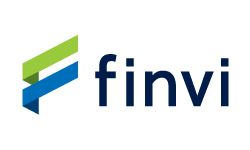Source: site
Amelia Schafer
ICT
RAPID CITY, South Dakota — Roughly 25 years ago, only 1 percent of all small businesses on the Cheyenne River Reservation in northwestern South Dakota were Native owned despite Native people making up more than 90 percent of the reservation population. That all changed when Four Bands Community Fund, a Native Community Development Financial Institution, came to town.
As of October 2025, more than 15 percent of small businesses on Cheyenne River are Native owned, funded by micro-loans, which are loans under $50,000, to Native entrepreneurs delivered by Four Bands.
“We’ve done every loan product except vehicle loans,” said Lakota Vogel, executive director of Four Bands and Cheyenne River Lakota. “Mortgages, home renovations – we are serving all of that.”
In 2024 alone, the nonprofit lender distributed 493 loans totaling $31,876,043 to entrepreneurs across South Dakota, according to its 2024 financial report.
The Community Development Financial Institutions Fund is a program under the U.S. Treasury that provides support and funding to Community Development Financial Institutions in the “nation’s most distressed communities.”
But that newfound economic stability and empowerment is threatened by a reduction-in-force notice issued on Oct. 10 from the Office of Management and Budget, stating the CDFI fund no longer aligned with President Donald Trump’s priorities.
In the letter, the entire CDFI fund staff was issued notice that their jobs would be terminated and the fund would be abolished in the midst of an ongoing government shutdown.
While the termination notice isn’t directly tied to the shutdown, it follows Trump threats prior to Oct. 1 that a shutdown would come with reduction-in-force notices to the federal workforce – a workforce that’s currently operating without pay.
Terminating the CDFI Fund is a move that’s come with immense pushback by leaders at the National Congress of American Indians and other experts, who warn the termination would be detrimental to lending and economic development in Indian Country.
“Without CDFIs, there would be literally no form of funding available to start a small business, purchase homes, and provide technical assistance in rural communities,” said Pete Upton, who is from the Ponca Tribe of Nebraska and the chief executive officer of the Native CDFI Network and Native360 Loan Fund. “Sometimes the Native CDFI is the only form of financial institution for miles.”

The Native CDFI Network serves as a national voice and advocate for Native CDFIs.
Over 48 percent of Indian Country is a banking desert, Upton said, so without CDFIs there would be no form of funding available for many Native communities on tribal lands.
CDFIs function a lot like a bank does, except they don’t actually offer checking and savings account services. A CDFI’s purpose is solely for funding. CDFIs grant loans, which means they fund small business owners and provide mortgages on homes.
Instead of waiting potentially decades to get off a tribal housing list, community members are able to go to a CDFI, take out a loan, and purchase a home.
“We’ve put 100 homes on Cheyenne River, and it’s been great,” Vogel said of the Four Bands Community Fund. “We have no delinquency within that product, we need more people to begin serving and building homes in our rural communities.”
They also provide to traditionally underserved communities, communities who in the past may not have been able to secure a loan due to systemic racism, a lack of capital or extreme rural location.
Native CDFIs are often crucial parts of rural, reservation communities. In some areas they’re the only way to provide funding to small businesses and homeowners. Often, they’re one of the only ways to finance property on trust land.
If the CDFI Fund goes away, so does that support.
“It’s really hard when you’re just trying to get started, and for many banks you look too risky to them, no matter if you’re Native or not,” Vogel said. “If we’re going to be shifting sort of the landscape of what entrepreneurship looks like across America, you need a chance for the new guys to enter the market, and so I think that’s what we do.”
And Native CDFIs don’t just finance rural areas, they can fund businesses in urban settings too.
In 2013, Four Bands expanded to service all of South Dakota, a move that’s created new businesses in cities like Rapid City. Independent Ale House, a bar and restaurant in downtown Rapid City, is a Native-owned business funded by Four Bands, Vogel said.
“But it varies,” she said. “We do everything from prairie dog eradication business to trucking to restaurants. We don’t specify by industry.”
Overall, CDFIs have for decades been a way to fund small businesses for Native entrepreneurs, but that will all change if funding and staff aren’t reinstated, Upton said.
Upton and others from the Native CDFI fund traveled to Washington, D.C., in late October to meet with legislators across the aisle and raise awareness about the services CDFIs provide, services that he said align perfectly with the administration’s priorities.
“I think it’s just a matter of being able to have a dialogue with the current administration or the OMB,” Upton said. “We’re still hopeful, and we’re hoping that once the government shutdown is over, that we can have dialogue with both sides of the aisle, and it’s always been supported by both Republicans and Democrats. So it’s a program that is fully bipartisan, and it’s been that way for years.”




